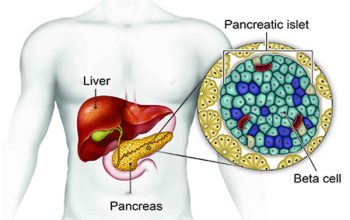High Blood pressure (HBP) or hypertension is notoriously known to be a silent killer. Oftentimes, HBP has no noticeable symptoms, and many patients are unaware that they have it. Thus, the signs and symptoms are misdiagnosed making it a high-risk illness. This disease develops over a period of time and, unfortunately, cannot be cured. However, it is efficiently controlled through medication and healthy lifestyle choices. One of the best ways to manage this illness is through physical activities such as walking workouts. There are a variety of walking workouts including brisk, short and longer walking sessions that will help you achieve the desired results. In this article, we will discuss the health threats posed by this disease; and how simple and hassle-free physical exercise such as walking benefits people with high blood pressure.

What Do Blood Pressure Readings Imply?
We know for a fact that, for life and sustenance, our organs need oxygenated blood that is carried by a network of blood vessels throughout your body. Every time your heart beats, a pressure, more accurately called blood pressure, is created to push blood through this network that includes your veins, arteries, and capillaries. This blood pressure is represented by numbers and is explained by two types of forces:
- Systolic blood pressure- this first force or number indicates how much blood pressure is exerted when your heart pumps out blood to the arteries.
- Diastolic blood pressure- this second force or number specify how much blood pressure is created when your heart rests between beats.
Here, the former is given more importance because an elevated reading in systolic blood pressure would imply that you are prone to high-risk cardiovascular diseases. However, an elevation in either type may aid in the identification of high blood pressure. A proper diagnosis should be confirmed with a doctor as it is pivotal that you understand your readings or results to control HBP efficiently. The BP readings are in mm Hg, which is the standard unit of measurement of pressure in medicine and means millimetres of mercury. The upper number indicates systolic reading, and the lower number represents diastolic reading.
There are five categories of blood pressure ranging from healthy to abnormal or risky. They are as follows:
- Normal- The numbers extending below 120/80 mm Hg is regarded within the normal range.
- Elevated- When your results consistently range from 120-129 mm Hg (for systolic) and lower than 80 mm Hg (for diastolic). These readings indicate that you are highly likely to develop HBP unless you take necessary precautions.
- Stage 1 Hypertension- At this stage, your BP invariably ranges from 130-139 mm Hg for systolic or 80-89 mm Hg for diastolic. Your doctor will most likely recommend lifestyle changes and even prescribe some medication based on the possibility of atherosclerotic cardiovascular disease (ASCVD).
- Stage 2 Hypertension- The blood pressure reading would be consistently above 140 mm Hg (systolic) or 90 mm Hg (diastolic). In case of such HBP, your doctor would most probably recommend a combination of both medication and lifestyle changes.
- Hypersensitive crisis- There is a real danger in this range of readings. This stage requires immediate medical attention as a reading above 180/120 mm Hg implicates crucial health risks. It is advisable to keep an eye out for symptoms such as chest and lower back pain, shortness of breath, immobility, low vision, or speaking difficulty, and then consult your doctor immediately.
Health Threats And Risk Factors Of High Blood Pressure
The risks associated with high blood pressure are extensive and can be life-threatening. When the blood pressure is too high, it implies that your heart and blood vessels are working extra hard, however, less efficiently to pump blood. As a result, your arteries will get damaged, leading to arrhythmia to heart failure, and further stroke. Other perils of HBP include kidney failure, sexual dysfunction, and vision loss. Being aware of what causes HBP can help manage and even prevent HBP. Therefore, it is vital to know the risk factors that can make you more presumably to develop HBP. Some of the risk factors include unhealthy diet, lack of exercise, obesity, family history, cholesterol, diabetes, smoking and tobacco use, stress, and the list goes on. Walking is a popular exercise recommended by most doctors to prevent and manage HBP. Committing to a healthy lifestyle that includes healthy transformations in your diet and physical fitness is an excellent step towards HBP prevention and management.
Guidelines For A Good Walking Workout
The old statement, “prevention is better than cure” is particularly justified for this illness. Exercise can help lower HBP as far as many medications. Research studies have shown that regular brisk walking is one of the drug-free approaches to reducing your HBP. Walking briskly for 30 to 45 minutes, five to six days per week can lower your HBP by up to 10 points. Below mentioned are some effective guidelines for a beneficial walking workout for HBP:
- If you are a beginner, 20 minutes per day, 3-5 times per week is an ideal regimen for you. Take notice to gradually build your endurance and aim for 60 minutes of a daily brisk walking routine.
- Set your pace hard enough to break a sweat, however, be mindful of overexertion.
- It is encouraged to combine aerobic exercise like walking with strength training or resistance exercise such as lifting light weights to maximize the benefits.
- Gear up for your walking workout with appropriate clothing and footwear. Your shoes should be comfortable and flat, and your clothes should be loose and allow you to walk briskly.
- Walking on an incline, hills, and stairs are quality ways to increase your heart rate. Wear a smartwatch or fitness activity gadget to keep a tab on your steps and heart rate.
- Begin with an effortless pace as a warm-up, slowly working to reaching your goal distance and time. Use powerful strides and an upright walking posture.
- Ensure proper hydration as dehydration adversely affect your blood pressure. Drink water before, during, and after the workout, and don’t let thirst be your guide. Your thirst signal might not be genuine, especially if you are on medication.
- Ultimately, make sure you consult your physician before commencing a walking workout or any form of exercise. Discussing your health needs and ensuring an appropriate regimen suitable to your health is key to verify a safe and productive walking workout.
Conclusion
Being physically active works wonders to bring down your HBP, and walking is one of the simplest forms of aerobic exercise that one can do. Your diet also contributes to lower your blood pressure. Another best preventive measure for this illness is to know your numbers by doing a routine check-up with a medical practitioner. You may be unaware of the quiet damage your HBP may be causing to your body. Besides that, you need to make changes that matter in terms of health and lifestyle choices. Quit smoking and limit your alcohol intake along with a low salt diet and see how it improves your BP readings. Also, regular walking workouts will help control your HBP effectively, and with such appropriate care and treatment, you can live a healthier and longer life.


